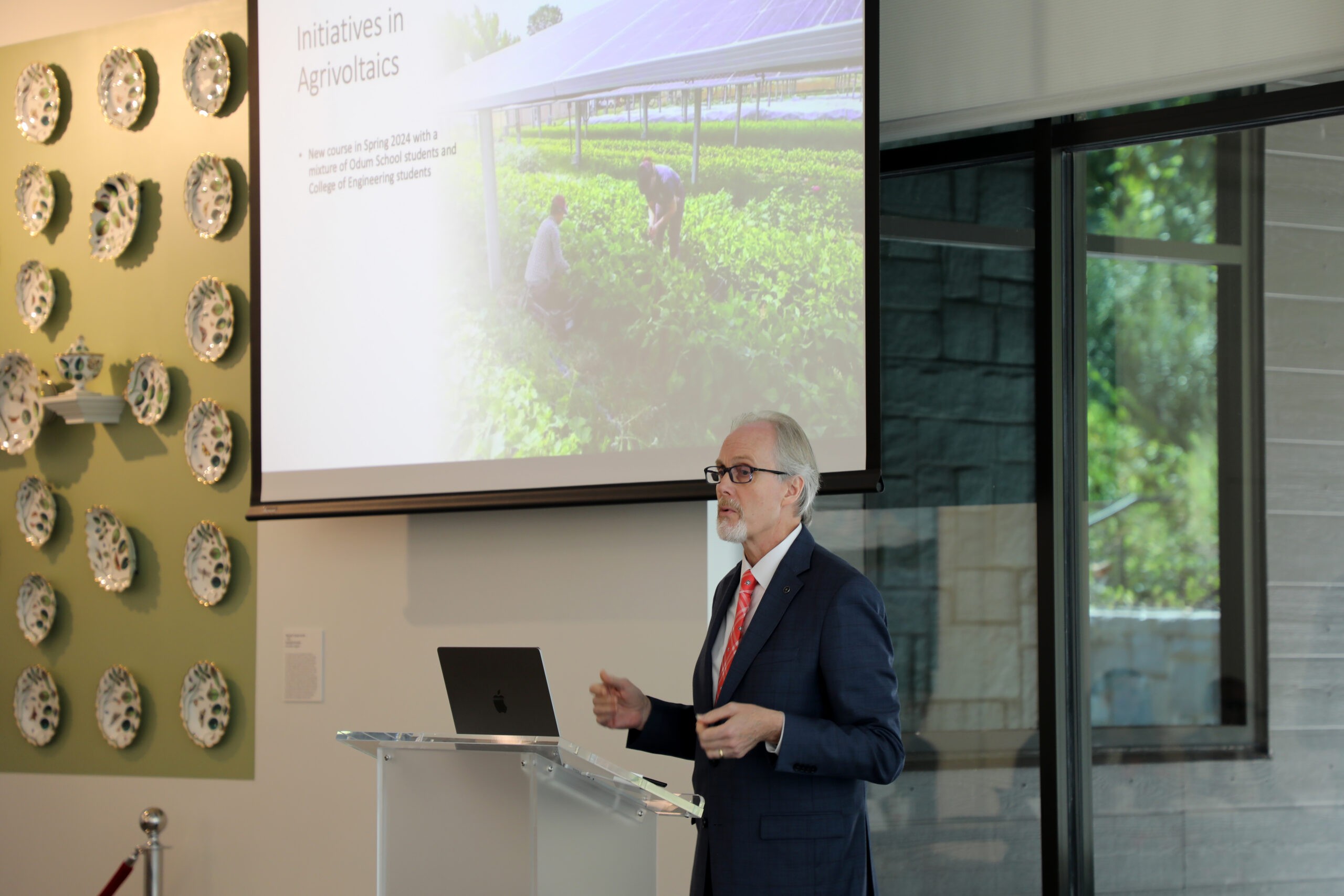I’m writing this a few hours after Hurricane Helene made landfall in the Big Bend coastal region of Florida, and is now barreling north through Georgia into Tennessee, Kentucky and the Carolinas. It’s a fact that Hurricane Helene picked up enormous amounts of energy as it travelled across the warm waters of the Gulf of Mexico. It’s also a fact that those waters have increased in mean temperature each year in step with increasing ocean temperatures globally. While it’s not possible to draw a straight line from climate change to any individual storm, we can say unequivocally that storms like Helene are getting more frequent and more dangerous as global temperatures rise.
Which is why the renewable energy transition is so critical to our goal of reducing carbon dioxide pollution, and its warming effects, in the atmosphere. Technologies such as wind, wave and solar power can reduce our reliance on fossil fuels and play a role in stabilizing global temperatures. However, the rapid deployment of renewable energy sources also creates a new set of environmental challenges, from the mining of metals for batteries to changes in land use.
Here in Georgia, our economy is anchored by agriculture. As energy companies move swiftly to convert Georgia sunshine into solar power, we face tradeoffs in land use that could see prime agricultural and forest land converted into utility-scale solar farms. There are social, economic and environmental costs to such a transition that we need to understand quickly. For example, traditional solar farms are often biologically impoverished, with low biodiversity, high rates of soil erosion and declining soil quality. We can’t afford to swap one set of environmental problems caused by fossil fuels for another set of environmental problems caused by solar arrays. And most certainly not at the expense of Georgia farmers and rural communities.
Agrivoltaics, the combination of agricultural production and solar energy production on the same land, has the potential to provide a rare “triple-win” for Georgia farmers, for clean energy production, and for the environment. Experiments show that the yields of some crops (e.g., potatoes, celery, tomatoes) are higher, while using less water, under solar panels than when open-grown. Cattle and sheep grazing under solar arrays can help manage vegetation and improve soil quality while providing a dual source of income for farmers. The biggest challenge to achieving the triple-win is understanding how to scale up agricultural and energy production to commercial scales that make sense for Georgia farmers and for energy companies.
The Odum School of Ecology is spearheading a UGA-wide initiative in agrivoltaics research to address the challenges of scaling up. Fundamental ecological research by Odum students and faculty can be directly applied to understanding how soils, microbes, water, crops, pests, pollinators and food webs respond to solar arrays on agricultural landscapes. Beyond the Odum School, we are collaborating with the College of Agricultural and Environmental Sciences, the College of Engineering and the Warnell School of Forestry and Natural Resources to develop educational and research opportunities for students and faculty. This fall, we began a new VIPR (vertically integrated project research) program in agrivoltaics to bring together undergraduate students from across UGA schools and colleges into interdisciplinary research teams. In October, the Odum School is co-sponsoring a symposium on agrivoltaics with UGA’s Willson Center for Humanities and Arts, School of Law and Office of Research that addresses the environmental, social and legal challenges of the energy transition.
Beyond UGA, the Odum School is developing partnerships with businesses, governmental organizations and local communities to ensure that our research efforts in agrivoltaics are centered in an economic and social landscape that makes sense for Georgia. Every day, our students and faculty develop new knowledge on how ecosystems are constructed and how they work. As Gene Odum noted, humans are a part of natural ecosystems, not apart from natural ecosystems. When we study the plants, water, microbes and animals associated with agrivoltaics, we can use ecological theory to address a critical and urgent environmental issue. And, when ecologists from the Odum School partner with colleagues within and beyond the University of Georgia, I am confident that we can achieve the triple win of agricultural production, energy production and ecological sustainability for Georgia and beyond.
Dean’s Corner, September 2024: Agrivoltaics, climate and the energy transition

